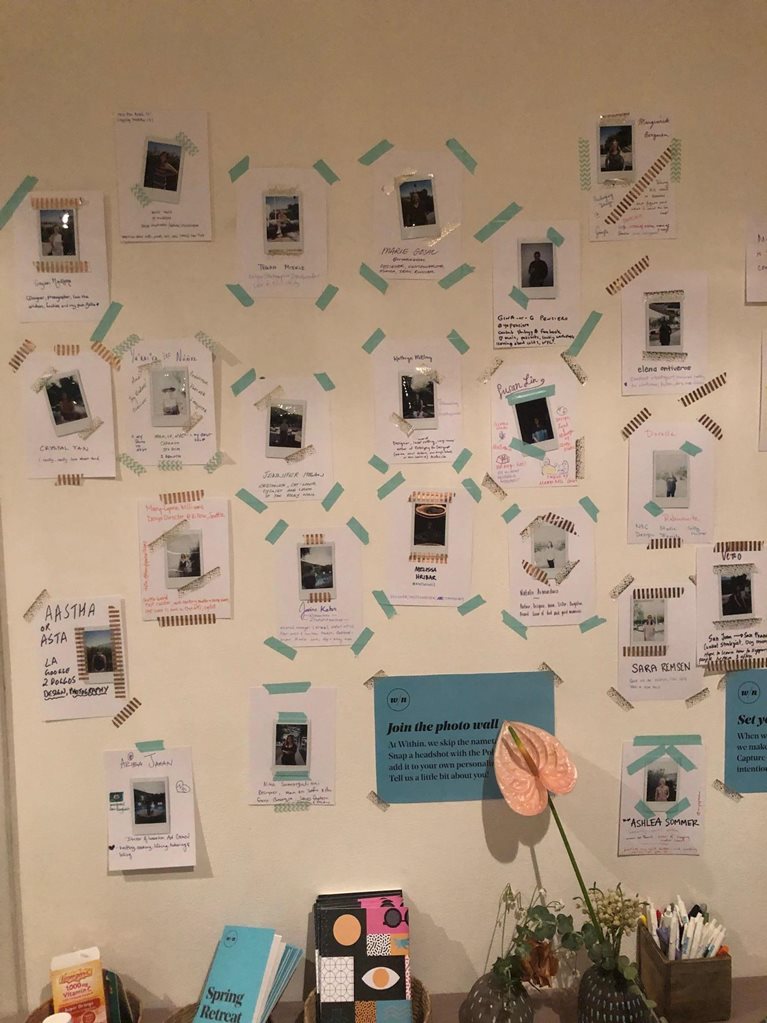“Should I really be doing this when there are 3 million other things I should be doing?” It was hard to ignore the loud internal voice upon arriving at the Within retreat — which, the voice later admitted, turned out to be an outstanding four-day leadership experience curated for women in design and tech in Palm Springs.
This year’s theme was leading authentically, but for me the retreat quickly became about compassion— in leadership, for ourselves, for those we work with, mentor and coach — and how it fits into the natural evolution of design thinking.
Orchestration of the retreat itself was a thoughtful application of design thinking — from traditional work on personal leadership values to coaching circles. In between these formal sessions, the opportunities for hiking in the desert, meditation, and energy work helped create bonds and let it all sink in. Embracing one of the retreat’s mantras, lead from within, made this gathering unique from other leadership conferences I’ve attended. In this moment I began to realize, if one is to become truly self-compassionate finding equilibrium is crucial which includes taking on only what is reasonable and not burying ourselves under unbelievable piles of work. Instead of trying to be perfect in every one of our roles — executive coach, mentor, parent, colleague, friend — we must get better at guiding ourselves with what we are able to do. This is where leading compassionately comes into play.

Similar to design workshops where we bring together cross-functional and hybrid teams framed around a problem or user need, the retreat offered an incredible benefit of connecting women with enough analogous synergies to create instant commonalities and trust. The emphasis on compassion was certainly the highlight, along with mind-body integration activities to cultivate themes and the space to listen, talk, and reflect on how to achieve authentic compassion.
Historically, design is about connecting users to incredibly well-thought-out experiences derived from deep empathy. The design community is already quite familiar with empathy— the ability to genuinely understand the emotions of others by experiencing feelings with them or through them. But embracing compassion takes empathy to the next level.
A conversation with the working mom leaders in my group, led to a turning point realization — we all try to do 100% in all our varying roles, which simply isn’t possible with the time in a day. Many of us felt guilty about feeling like we were not being good enough parents with working demands. This was the moment when we asked, “what is the answer?” Our Within coach, Ashlea, suggested “self-compassion”. It hit us all like a mic drop— unlocking a whole new life and career perspective that gives us permission to just be. In a leadership role, compassion or self-compassion may be more about considering our own needs in order to lead authentically, without feeling that we must be directive or 100 percent perfect. We need to be able to say this is what I see, this is what I need help with and this is how I can coach – instead of immediately offering answers and solutions. Self-compassion sets us free. It allows us to open up the space for authenticity, self-care and to encourage others to do the same. If we could all step into this, imagine the strides we could make towards better teams, companies, and outcomes for the constituents we serve, ultimately enabling a value shift in how we live and work.

Once we’re aware that compassion offers value, how can we incorporate this soft skill into leadership roles? Surely this is the challenge; it has taken decades for the business world to digest “empathy,” and the language around this type of work may be unfamiliar or uncomfortable. Letting others experience compassion rather than labeling it for them may be the most effective route since it’s in our nature to learn by doing. Building a framework — whether dialogue, introspection, or a simple exercise about what team members want to own — can be deeply meaningful and doesn’t require a formal label.
Showing up with true compassion for the self and compassion for your team elevates collaboration to a whole new level and might just be the key to helping others bring compassion to the workplace. The last few years we’ve seen a large shift toward coaching and building capabilities. At McKinsey, we’re encouraging all our colleagues and clients to incorporate design thinking into their personal toolkit. As a result, individuals are more quickly heard, can ask the right questions, and are equipped to successfully coach their way through a stressful situation.
We’re often judged against performance reviews at work, role models for parenting and other formal or informal grids. Enabling others to “do” is a traditional leadership value, but how can we expand the reach in a non-hierarchical way? By asking others to take the same perspective and collaborate in a way that feels aligned, which will then provide greater impact for our clients and their potential.
Putting deeper compassion into practice, towards ourselves and others, brings these insights to the next level. Shortly after the retreat I had one of my best coaching sessions ever! As I talked with a Pharma CXO client, I found myself listening more intently and thinking about the value I could compassionately provide to him. We discussed his professional career ambitions and how best our team could empower him in his new role, in addition to project specific work. We got to the underlying “whys” faster and the connection became about providing him with a platform to live his best life. At the end of the day the leadership role is about accountability but getting there with compassion is a heck of a lot better than the alternative, and that is the biggest takeaway yet.